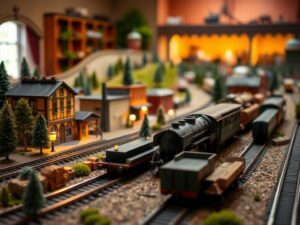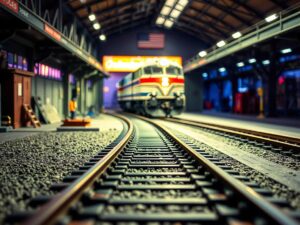
Programming DCC Locomotives: How to Customize Speed, Lights, and Sound
All aboard! Let’s dive into the exciting world of DCC programming. This is where you can truly personalize your locomotives and make your layout come alive.
What is DCC programming? It’s the process of customizing various features of your DCC-equipped locomotives, such as speed, lights, and sound. By programming these features, you can create a more realistic and enjoyable experience.
Each locomotive needs a unique address to differentiate it from others on the track. Think of it like a house number. You can set and change addresses using your DCC controller.
Speed is a fundamental aspect of locomotive control. DCC systems typically offer 14, 28, or 128 speed steps. The more steps, the finer control you have over your locomotive’s speed. You can also adjust the speed curve for realistic acceleration and deceleration.
Lighting can add a whole new dimension to your layout. You can program headlights, ditch lights, and even interior lights. Experiment with different lighting effects like dimming, flashing, and alternating lights.
Sound decoders bring your locomotives to life with realistic engine noises, horns, whistles, and other sound effects. You can adjust sound volumes and even set function keys for specific sound triggers.
Programming DCC locomotives is typically done on the main track (Ops Mode) or on a programming track. You may need additional tools like a programming track setup or computer software options like JMRI.
Advanced customizations include using momentum settings for smoother starts and stops, using Consist Mode to operate multiple locomotives together, and backing up your locomotive settings for future use.
Troubleshooting programming issues can be frustrating. Common problems include decoders not responding or inconsistent speed control. Check and reset CVs (Configuration Variables) to resolve these issues.
Experiment with different settings to create a truly unique and personalized layout. Happy programming!








